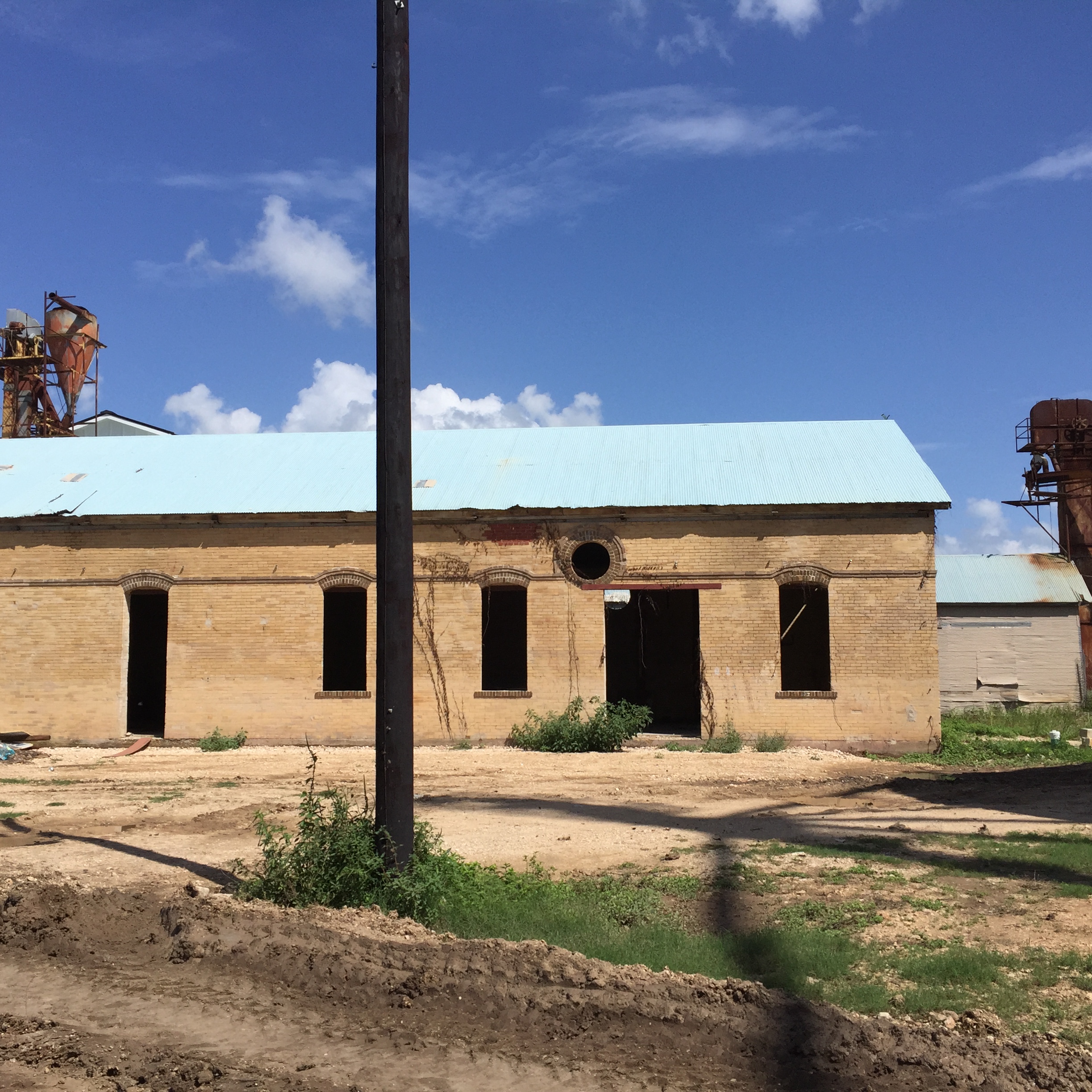Reading "Celebrating 125 years: Buda, Texas (1881 - 2006) has provided a lot of what we know about Buda Mill & Grain Co.'s history - specifically the brick building that was used a the cotton gin.
"In Buda's first 50 years of existence, cotton was the big cash crop of nearly every rural resident...It was a cash crop, but it was also labor intensive from the spring until harvest time in the early fall. David Crews built the first area cotton gin before there was a Buda. In 1890, the Farmers Alliance built a gin at the extreme end of Main Street, with Bob Barton (there have been wo Bob Bartons since that time) as general manager...The Alliance ran the gin for about 25 years...In 1915 the board voted to sell the gin to Mountain City native Will Barber, who was the president of the State Bank and Trust Company. New equipment and a modern brick building was added and Barber brought in his first cousin, Henry Barton, as partner. The gin was operated another 22 years before the boll weevil and the Great Depression put all of the Buda gins out of business."
Megan Jogerson North wrote us to let us know what she'd discovered while researching the history of the San Marcos Brick Cotton Gin Building. The owner of the Farmer's Union Gin Company (in San Marcos), Oscar Calvin Smith supervised the construction of the Buda Gin for local owner R.C. Barton who wanted the Buda Gin to be built just like the one in San Marcos. Mr. Barton arranged for the laborers and the materials and Mr. Smith saw to the construction of an exact replica.
Megan also explained that the Buda Gin was built in the early Texas architectural style with a very definite German influence, which is evidenced in the arches over the casement windows and the rose windows in each side wall, as well as the massive, well constructed walls which were hand-made bricks rather than the more commonplace stone.
Sun coming in from one of the two circular windows in the building. We've never learned if there was a functional reason for them so if anyone knows, we'd love to hear about it.
As we were working on a permit set for the building, a representative from Butler Brick came out to look at the building since we needed to know what the insulating factor of the brick walls were. He explained that the bricks were definitely from the Zilker Park location of Butler Brick and built in a brick formation called a Flemish bond. We learned that a Flemish Bond is rarely used today on new modern buildings because it requires great attention to detail.
When we started seriously looking at the Mill in 2011 and considering renovation of the current buildings, we'd never paid much attention to the building hidden by four of the smaller silos. But, as we slowly cleaned up the site, the beauty of the building that was the cotton gin became clear.Besides saving the original equipment we found, we also saved the original steel trusses.
And finally the renovations have been completed this year.







